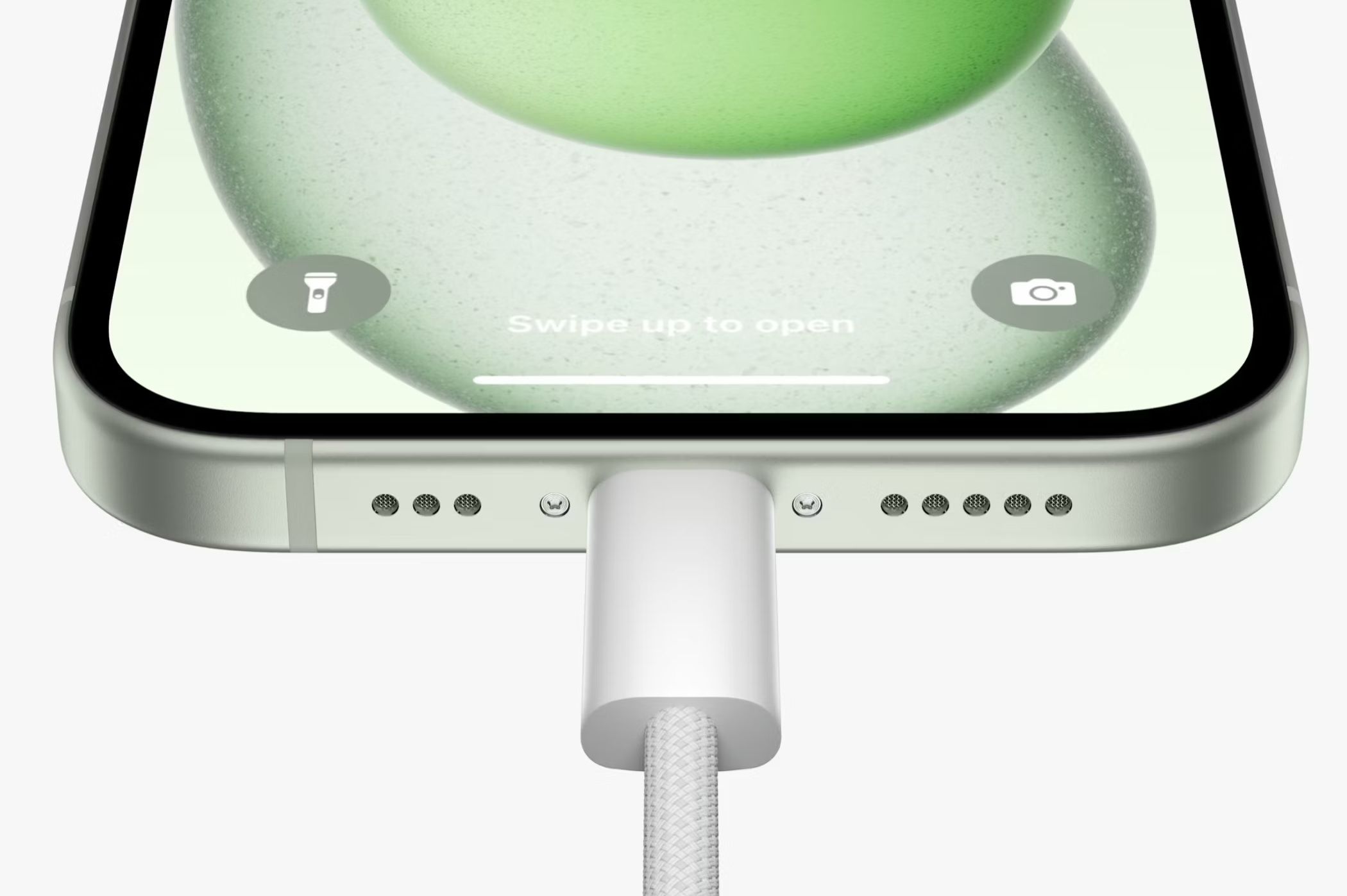
IPhone Adopts USB-C, Bids Farewell to Proprietary Chargers

IPhone Adopts USB-C, Bids Farewell to Proprietary Chargers
The iPhone 15 will be the first iPhone to include USB-C functionality, following on from a change Apple made to higher-end iPad models. Though Apple didn’t come up with this great idea on its own, the change is still something to celebrate.
Apple Drops the Lightning Connector
Both the iPhone 15 and iPhone 15 Pro families (which include larger Plus and Pro Max models, but no iPhone mini ) will feature a USB-C port for the first time. This is the first time Apple has changed the iPhone connector since Lightning replaced the old iPod connector on the iPhone 5 in 2012.
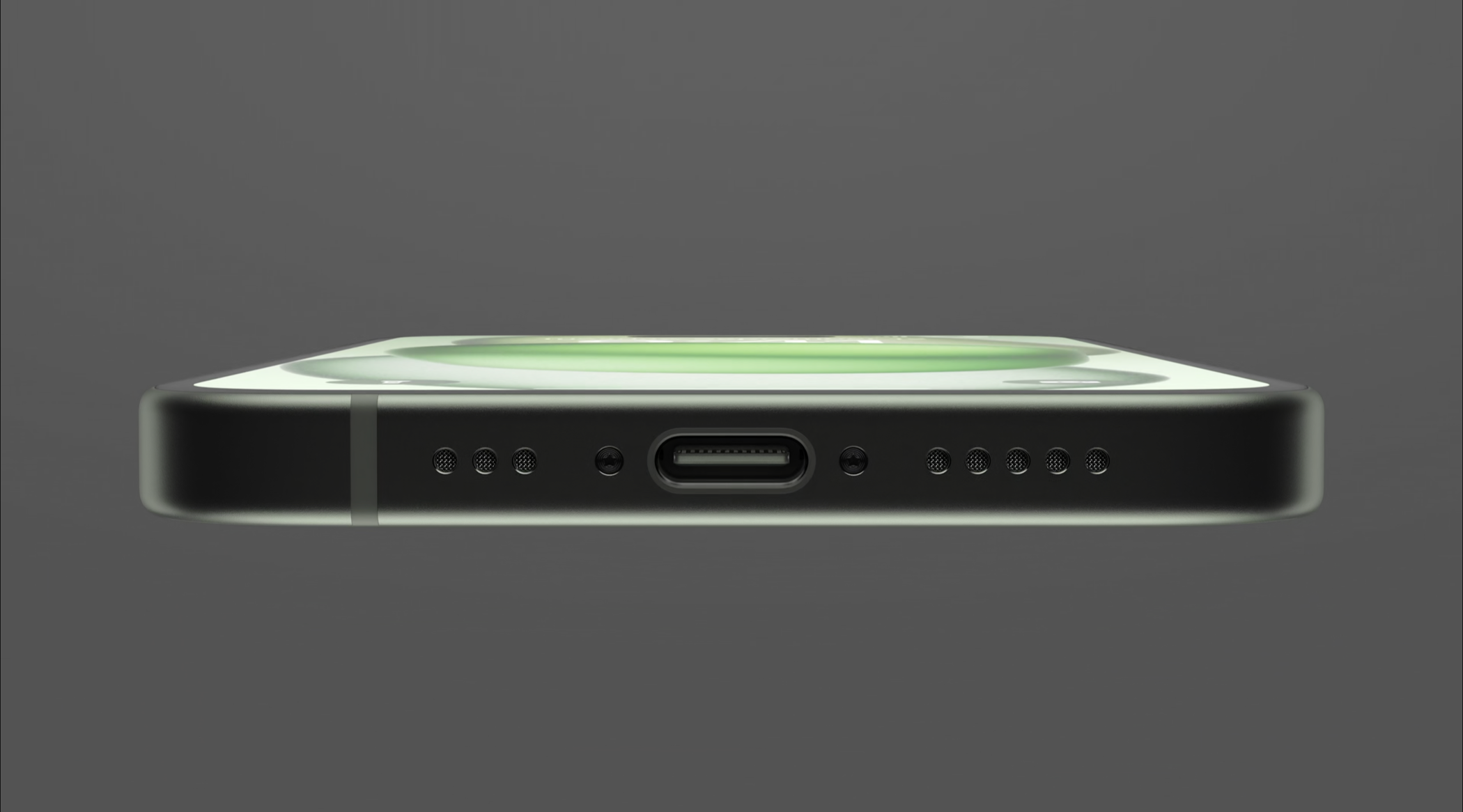
Apple
The Lightning connector is Apple’s proprietary connector, whereas USB-C is a universal and open standard. Apple’s adoption and unwillingness to move away from Lightning has resulted in a vast number of accessories designed for the iPhone (and the iPad) that use the connector, from Lightning USB flash drives to docks, battery cases, and even Apple’s camera connection kit.
Since the Lightning connector was limited to only Apple devices like the iPhone and iPad, its usefulness was limited. Proprietary cables are usually a bad idea for this very reason. Now that Lightning is dead, iPhone users are taking a big leap towards a more convenient “one cable for all charging tasks” future.
Ironically, Apple is no stranger to USB-C charging. The company was one of the first to embrace the philosophy of charging using USB-C. The “Touch Bar” MacBook Pro (manufactured between 2016 and 2021) relied solely on USB-C for charging, as did MacBook Air and standard MacBook models of the same era. Even the latest Apple Silicon machines that use MagSafe connectors can still be powered over USB-C, provided you have an adequately powerful adapter.
Certain models of iPad have also embraced USB-C, particularly higher-end models with Apple advertising the USB-C port as a selling point that facilitates the connection of peripherals like docks and external drives. In its unveiling of the iPhone 15 Pro Apple even advertised the ability for the higher-end smartphone to record video directly to external volumes connected via USB 3.0 .
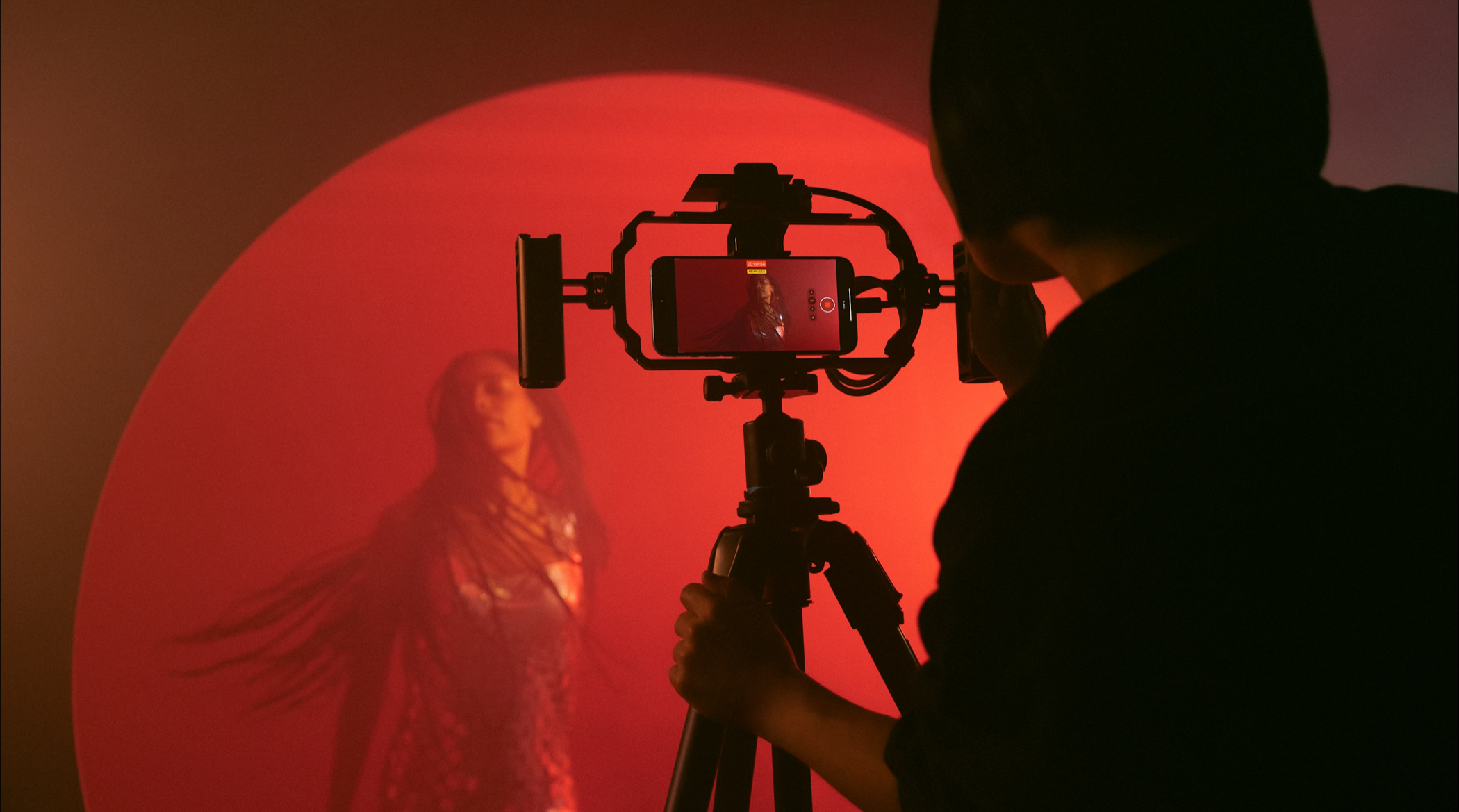
Apple
The iPhone is well overdue for the switch to USB-C, particularly compared to Android devices which have been using the standard for years. Nintendo embraced USB-C for the Switch in 2017, and both Microsoft and Sony use USB-C ports on their Xbox Series and PlayStation 5 consoles.
It’s now easier to carry a single cable wherever you go to charge your iPhone, iPad, MacBook, Switch, Android tablet, Windows laptop, and so on. The new USB-C iPhones can even be used to charge the Apple Watch and AirPods with the right adapter (and who knows what else, once the technology is put through its paces).
One Connector, Two Standards
If you’re thinking of picking up an iPhone 15, there is a bit of bad news to process too. Though both the base and Pro models introduced in 2023 include a USB-C connector, only the iPhone 15 Pro and Pro Max are capable of USB 3.0 speeds.
The base iPhone 15 and Plus models are stuck with the same transfer speed as the previous Lightning connector. That is to say, Apple is still using the USB 2.0 standard which caps out at 480 megabits per second. For comparison, the iPhone 15 Pro can do 10 gigabits per second, a twenty-fold speed increase.
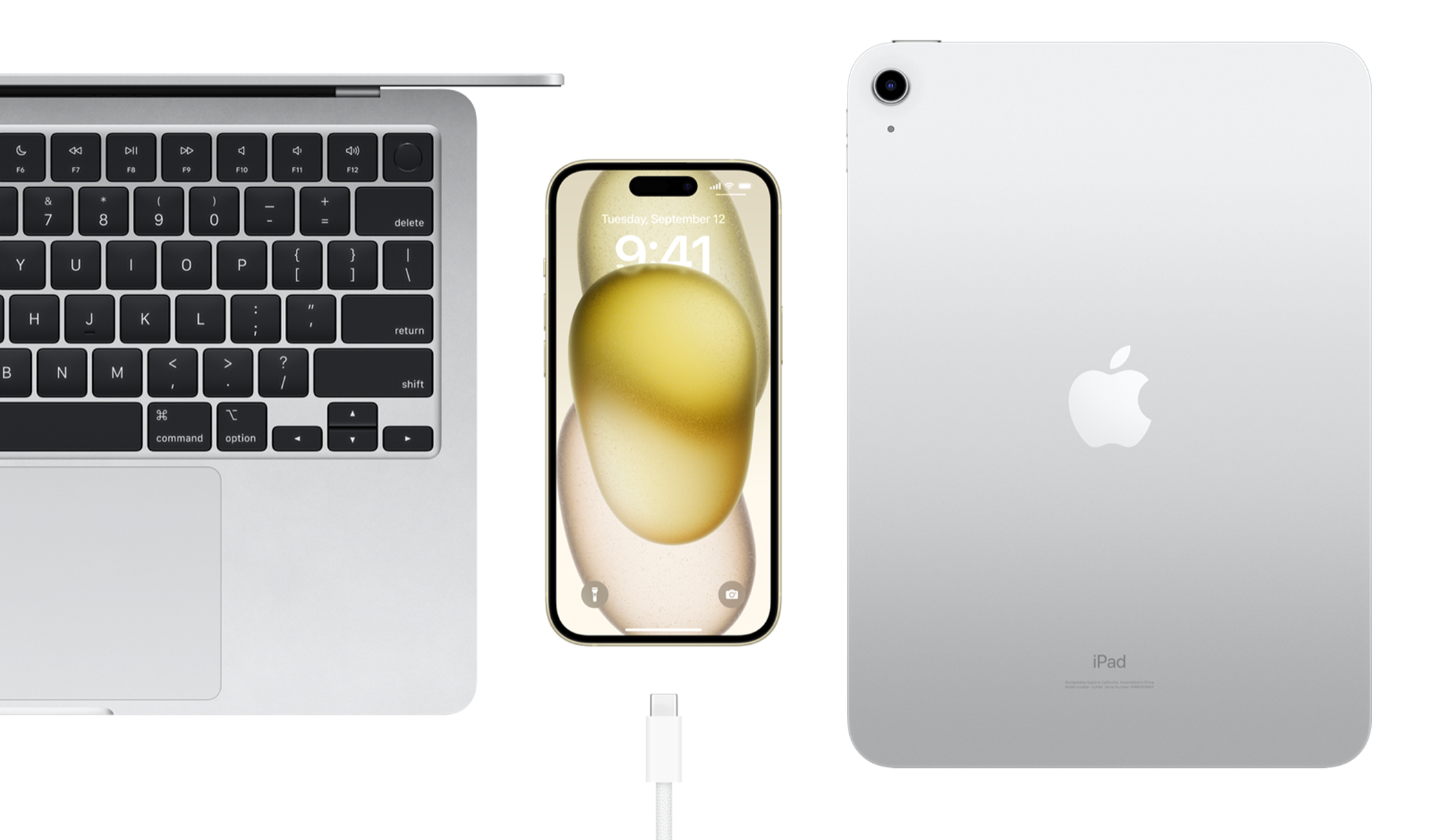
Apple
This shouldn’t affect charging, which Apple says will net you 50% charge in 30 minutes when using a 20w charger or better (for both base and Pro models) so if you never use a cable to transfer data then you likely won’t notice any speed limitations.
How the EU Forced Apple’s Hand
There was, however, one detail missing from the iPhone 15 event that Apple held on September 12, 2023. Not only did the company bury the lead a bit on the switch to USB-C (which was hotly tipped before the event), but Apple obviously didn’t mention the EU legislation that forced its hand in making the change.
In 2022 the EU passed legislation that mandated all smartphones sold in the EU by “Autumn 2024” use USB-C for charging. The rule also applies to tablets, digital cameras, headphones, handheld game consoles, e-readers, and, at a later date, laptops too.
The change effectively forced Apple to make a decision: transition the iPhone range to USB-C and be done with it, or make a subset of iPhone devices compliant that are sold in Europe. Thankfully, the company went all-in on USB-C with Apple Senior Vice President of Worldwide Marketing Greg Joswiak previously conceding “obviously we’ll have to comply, we have no choice.”
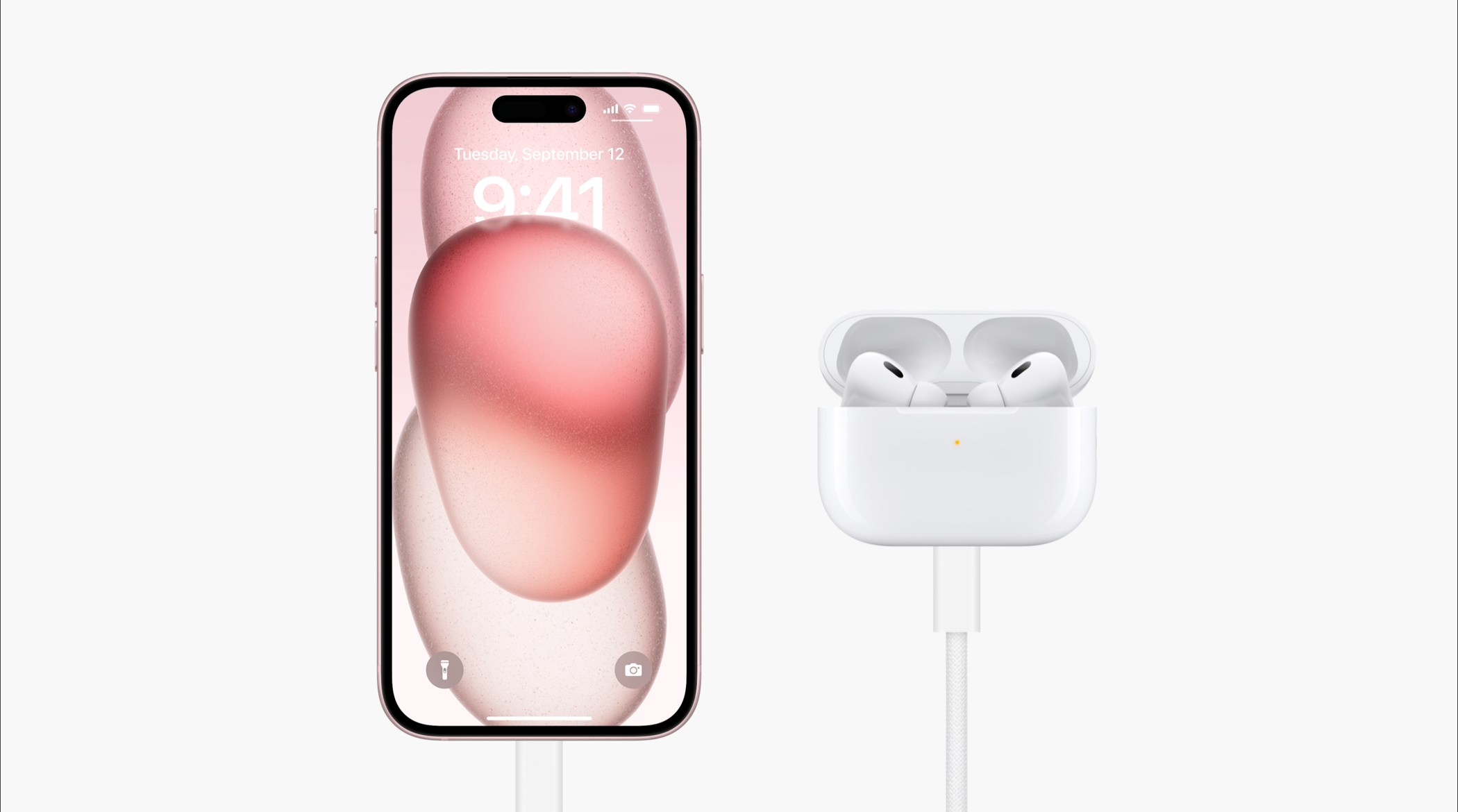
Apple
Apple could have put the change off for a year, since “Autumn 2024” is right around the time when the iPhone 16 is due for release, but the company clearly thought that there was little point in waiting to make an inevitable change.
The company previously made comments that suggested the mandate would “stifle” innovation and “harm consumers in Europe and around the world” though it’s not clear how the company came to that conclusion. It’s fair to say that companies like Apple generally prefer to set trends rather than be forced to follow them.
Can You Use Any Old USB-C Cable?
You should be able to use most USB-C cables to charge your iPhone, though it’s worth noting that not all USB-C cables are made to the same standard. You’re better off using a recognizable brand like Anker, Spigen, and Belkin . There are also telltale signs to look for so that you can tell whether a USB-C cable supports fast charging .
Once upon a time, there were incidents where non-compliant USB-C cables caused damage to hardware . Some smartphone manufacturers (looking at you, Oppo) shipped cables that could potentially harm other manufacturer’s devices. Finding a cable that’s fully compliant with USB-C specifications should eliminate risk, and it’s a lot easier to do this now than it was back in 2016.
On top of a compliant cable (which Apple should include in the box), you’ll need a suitably powerful 20w or better USB-C adapter to fast charge your iPhone. Check out our list of best phone chargers and best portable battery packs for some ideas.
What About Your Old Lightning Cables?
If you’re coming from an iPhone introduced in 2022 or earlier, you’ve probably amassed a spaghetti-like mess of Lightning cables. Hang on to them. Without dedicated cables, you’ll need to use Apple’s cursed USB-C to Lightning dongle to charge your iPhone.
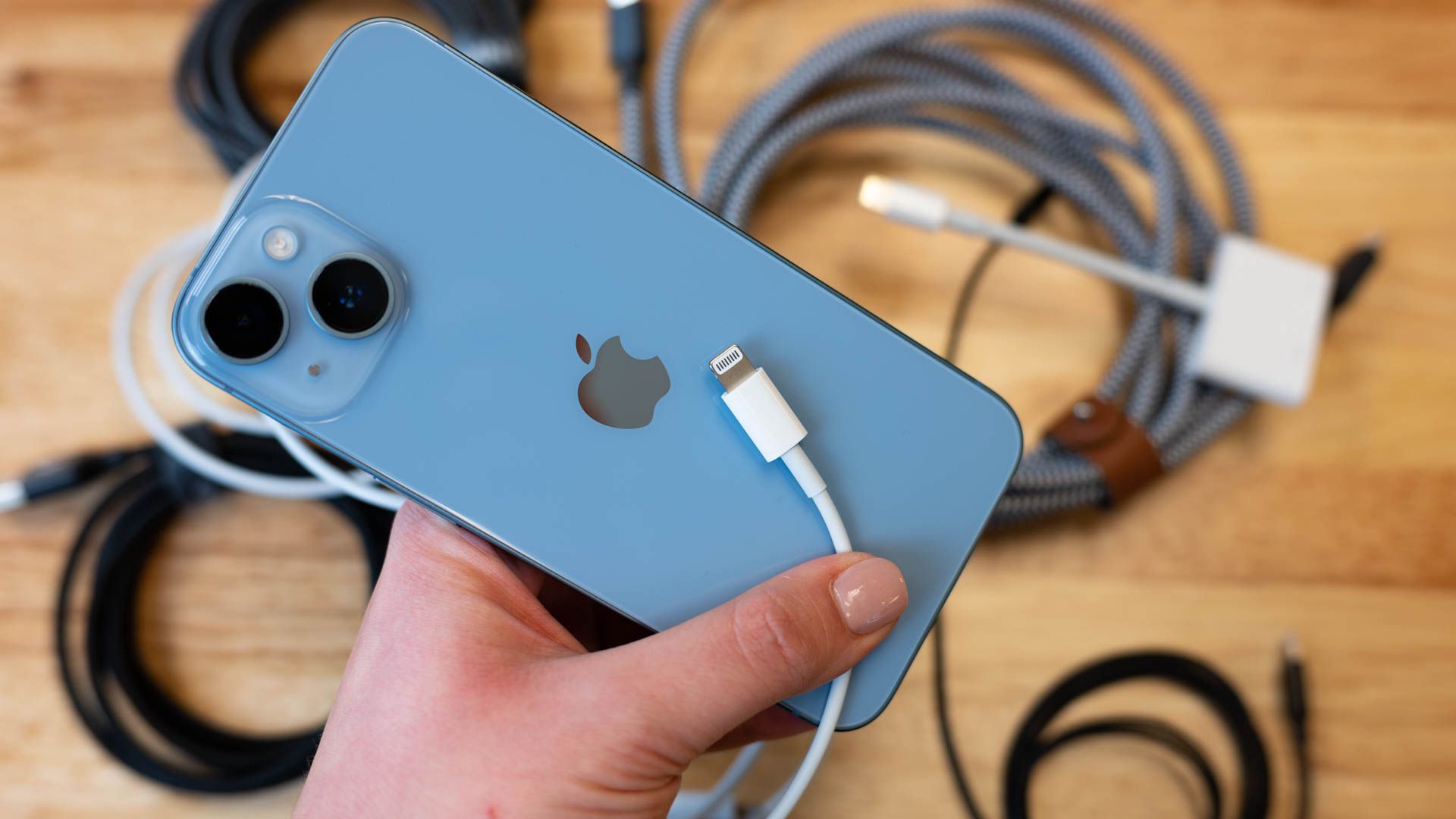
Hannah Stryker / How-To Geek
Take the opportunity to bin those chargers that are frayed, split, cracked, or hanging on with hope and a prayer. Donate the rest to people in your life who still use older iPhone models. Keep them for as long as you have iPads, AirPods, and other similar devices that are reliant on Lightning.
You can even pick up Lightning to USB-C adapters that turn your Lightning cables into USB-C cables, a far cheaper investment than buying a whole new set of cables.
Probably Not Worth Upgrading For
The iPhone 15 and iPhone 15 Pro have some big improvements including better cameras, longer zooms, faster chips, new materials and colors, and much more. Though USB-C is a big deal, we’re not convinced it’s worth upgrading for alone outside of a few special use-case scenarios like recording video or shooting photos to external devices.
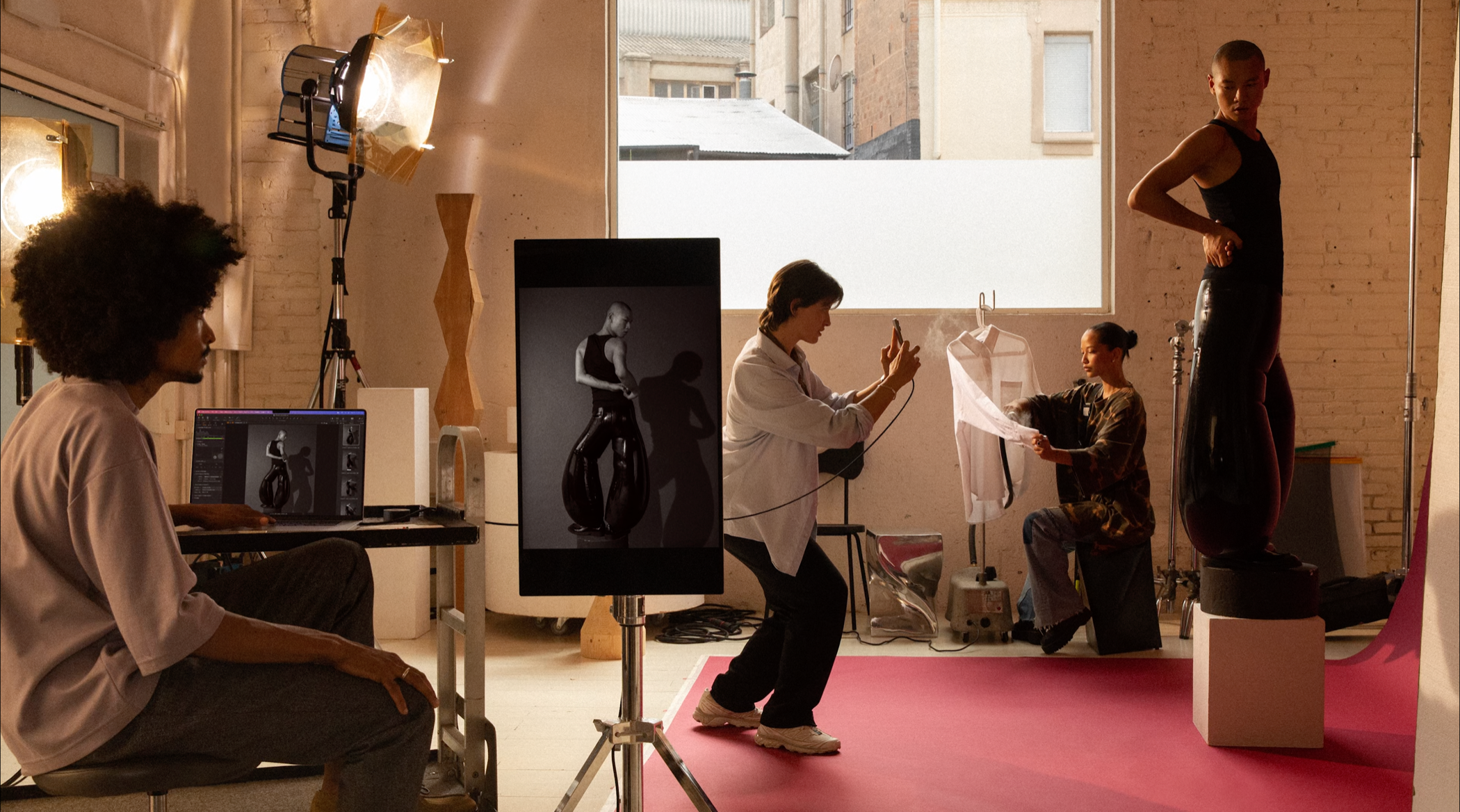
Apple
Apple didn’t just ditch Lightning on the iPhone 15, the company also updated the AirPods Pro to include USB-C charging .
Also read:
- [New] The Art of Crafting Text Memes Quickly
- [New] The Creative Vanguard Top 6 Redefining Digital Arts for 2024
- [Updated] Harness Freedom with Top-Rated Android Editing Apps
- [Updated] Perfect Your Watchlist with Controlled Netflix Frame Rate
- Enhance Your Presence Best Free Tools for Intriguing Openings for 2024
- EyeMosaic The Essential Photo Patcher for 2024
- Guide: Top 3 Methods for Enforcing Parental Control on Your Child's Snapchat App on iOS Devices
- How To Uncover Your iCloud Password With Just Your Device's IMEI Number - Expert Secrets Revealed!
- List of Pokémon Go Joysticks On Lava Blaze 2 Pro | Dr.fone
- Ringtones Gone Rogue? Discover 10+ Methods for Reviving the Sound on iPhone, iPad & Android Devices
- Siri Stuck? Top 10 Fixes to Reactivate Siri on Your iPhone – Comprehensive Tutorial
- The Definitive Strategy for Reviving a Blocked iPhone: Secrets to Access, Unlock, and Data Retrieval
- The Life of the Greek Gods
- Top Rated Gaming Motherboards of 2024: Comprehensive Guide by Socket Type & CPU Chipset
- Understanding Monitor Error Messages: Insights From YL Computing and Their Software Solutions
- Title: IPhone Adopts USB-C, Bids Farewell to Proprietary Chargers
- Author: Daniel
- Created at : 2025-02-12 21:40:02
- Updated at : 2025-02-19 19:54:37
- Link: https://os-tips.techidaily.com/iphone-adopts-usb-c-bids-farewell-to-proprietary-chargers/
- License: This work is licensed under CC BY-NC-SA 4.0.